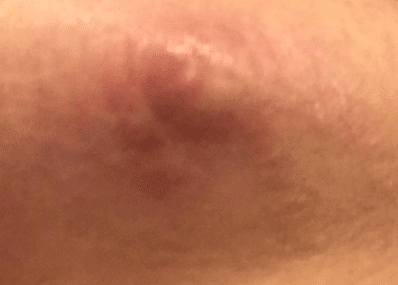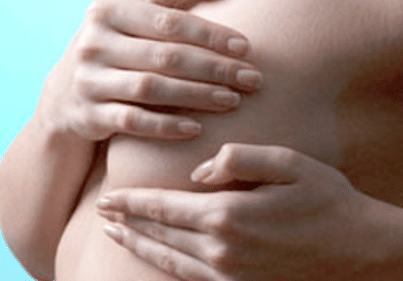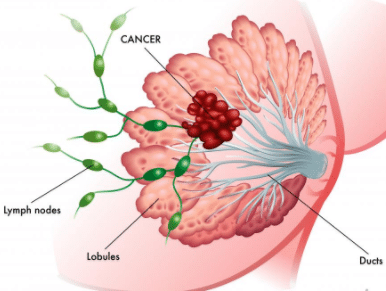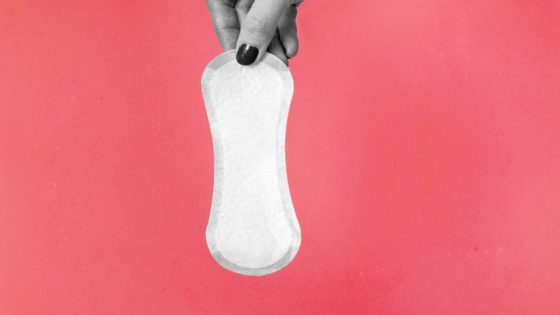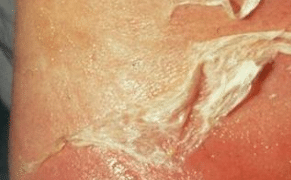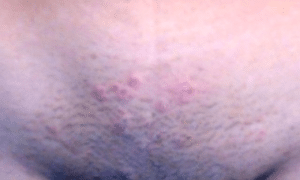An overview on lump under nipple, Causes, Cancer, During Puberty, Discharge, Male, Get Rid and Treatment.
What Causes Lump under Nipple
Most of the breast lumps are brought about by benign conditions, although sometimes a breast lump may be a symptom of the breast cancer.
It’s crucial to see the doctor as soon as possible if you notice a lump in the breast so that they may refer you for further tests to confirm the cause.
Some of the causes of breast lumps and symptoms are as outlined below.
Benign breast lumps
There are several different benign causes of the breast lumps. Most of the benign breast lumps are harmless and might not necessarily need any treatment.
- Fibroadenosis
Fibrocystic breast disease, also called fibroadenosis, is a term that is used to describe a group of benign conditions which affect the breast. The symptoms of fibroadenosis include:
- breast pain (mastalgia or also known as mastodynia)
- increase in the size of the breast
- Bump under the nipple, especially just before or during a period
Fibroadenosis may develop in one or even both breasts or might affect just part of a breast. The symptoms also vary significantly between women, with some of the women finding them slightly annoying and others finding them painful. The pain and lumpiness will disappear after a period.
The cause of fibroadenomas is not well known. But, it might be due to the breast tissue responding abnormally to the hormonal changes that happen with the menstrual cycle.
- Fibroadenomas
Fibroadenomas are the smooth, well-rounded solid lumps of tissue which at times develop outside the milk ducts (which are the tiny tubes that are found in the breast which carry milk). They are very common in young women.
They are also described as “breast mice” as they may easily move around within the breast.
Fibroadenomas are able to disappear on their own, but sometimes remain and also grow larger in size, especially during pregnancy. They don’t resolve after a period.
It’s not clear what leads to the condition, but it is said that they can happen due to an abnormal response to the hormone estrogen.
This is due to the fact that they are common in women who haven’t been through the menopause and also postmenopausal women who are having hormone replacement therapy.
- Breast Cysts
Breast cysts are normally the fluid-filled sacs which develop within the breast tissue and may lead to a smooth, firm lump developing. They are common in women who are aged 30 to 60.
Cysts normally vary in size. Some might be tiny, while others may grow to many centimeters in diameter. Single or even multiple cysts can happen in one or both of the breasts.
Cysts normally do not lead to any symptoms, although some of the women might have pain in addition to the bump under the nipple.
As with fibroadenomas, hormones are said to play a role in the development of breast cysts as they are very common in the pre-menopausal women and also postmenopausal women that have undergone HRT.
- Breast abscesses
A breast abscess is usually a painful collection of pus which forms in the breast.
In addition to the painful lump, symptoms of the abscess may include a high temperature and inflammation (redness and swelling) of skin over the affected area.
Most breast abscesses are brought about by a bacterial infection. The bacteria enter the breast through small cracks or even the breaks in the skin of nipple, which might sometimes develop during breastfeeding.
- Other benign causes
Other benign causes of Bumps under nipple are:
- mastitis –this is where breast tissue is very much painful and inflamed
- fat necrosis – a hard, irregular lump normally brought about by trauma or even the bruising to the breast; for instance, after surgery on the breast
- a lipoma – a fatty growth which leads to a lump
- An intraductal papilloma – a wart-like growth that is found in a milk duct, which might also lead to nipple discharge.
Lump under Nipple Breast Cancer
Although the majority of breast lumps are benign, a lump in one of the breasts might sometimes be an indication of breast cancer in both women and men.
A lump near nipple is likely to be an indication of breast cancer if it:
- is clearly defined
- feels somehow firm
- doesn’t move around like all other lumps
- persists after a period or even develops after menopause (in women)
Breast cancer can as well lead to some other symptoms, like discharge from the nipples, dimpling on the skin of the breasts, and also changes in the appearance of the nipple (like becoming sunken into breast).
The risk of breast cancer increases with the age but is common in women and men over the age of 45.
Bump under Nipple and Clear Discharge
Nipple discharge can be an early indication of breast cancer, but most of the cases of nipple discharge are because of the benign conditions.
The following are guidelines that are used to differentiate benign discharge from the discharge which is associated with malignancy:
- Spontaneous Discharge
The discharge which comes out without squeezing is the only type of discharge that is of concern. If the discharge only happens with squeezing, then ignore it and stop squeezing the breast.
Check your bra or even night clothes for available evidence of spontaneous discharge. If you see any kind of spot, then save it and show it to the doctor.
- Color
Worrisome discharge is usually either bloody or even clear. The discharge which is green in color, milky or any other color is almost always of no concern. Note that if you have large amounts of milky discharge and you are also not breastfeeding, then it should be brought to the attention of the physician.
Tests should be done so as to evaluate for the possibility of a pituitary tumor. Milky discharge with squeezing is not of any concern.
- Single versus multiple ducts
If a woman squeezes the breast and sees any discharge from several spots on the nipple, then she can be reassured that the discharge is nothing to worry about.
But, if the discharge is consistently emanating from one spot on the nipple, then it is of more concern. This kind of observation should be confirmed by the physician
Bump under Nipple in Infants
It’s normal for babies to experience mild or swollen, enlarged breasts or bump under the nipple. They are almost benign and because of exposure to the maternal hormones in the womb.
The same hormones which lead to the mother’s breasts to swell and also the milk glands to be stimulated may do the same to the baby’s breasts.
These lumps and the enlarged breasts in baby might be noticeable at birth. They can also continue to grow after birth for a period of time. If they are pinched, some real breast milk might be expressed.
Over weeks, or even months, when there is no more exposure to hormones, the bump under nipple starts to shrink and then becomes very flat. Sometimes a normal, small amount of tissue remains, but it doesn’t grow or lead to any discomfort.
Tips for Concerned Parents
Sometimes, overly worried parents may touch and also pinch the breasts so much that the skin area gets irritated. Leave them alone and ensure that you let nature shrink them.
When to Worry About Swollen Breasts or Lumps
In the rare case when breasts appear infected (swollen, tender, or having a discharge) and the baby has a fever, then call the pediatric provider so as to check if any infection has set in.
Bump under Nipple during Puberty
When puberty starts, lots of hormones are made in the body. As well as androgens (which is the male hormones) the glands can also make some of the estrogens (which are female hormones).
It takes a period of time for the hormone levels to sort out, and normally boys can develop some bump under nipple while this is occurring. They get a small swelling under one or even both nipples and it might sometimes feel tenderer or even sore.
- The breasts usually don’t grow any bigger, but the swelling which is under the nipples might hang around for some years while a person undergoing puberty.
- You might feel sure that every person may notice that you have ‘breasts’ but most other people don’t notice them at all.
- About 70% of boys can experience some breast tissue at some moment in life, so if you think that you are growing breasts, then just know that you are not alone.
- The breast tissue doesn’t need to stay there and the bump under nipple can disappear by the age of 20 or even earlier.
- If you are overweight then you can have some fat under the skin around breasts. This is very different from breast swelling brought about by hormones and will not disappear unless you lose weight (which we understand is hard to do).
Lump under Nipple Male
The main symptom that is exhibited by breast cancer in men is a lump that is found in the breast. The nipple or even the skin might also be affected.
See the doctor if you have a breast lump or any other indicated symptoms that appears to worry you.
It’s very unlikely that you have cancer, but it’s better to get checked out.
Breast lump
Cancerous breast lumps normally:
- Happen in one breast
- develop under or even around the nipple
- are usually painless (but in very rare cases they may hurt)
- feel hard or so rubbery
- don’t move around within the breast
- feel bumpy rather than being smooth
- get bigger over a period of time
Most of the lumps and swellings aren’t an indication of cancer.
They’re usually brought about by something that is very harmless, like gynecomastia (enlarged male breast tissue), a lipoma or a cyst (fluid-filled bump).
Bump under Nipple Piercing
Localized Infection
When a piercing acts up, it is usually assumed that it has an infection. But, not everything that is wrong with a piercing is to be taken as an infection.
When piercings are done and cared for according to the accepted practice, then an infection (invasion of disease-causing microorganisms which have a detrimental effect) is not prevalent as said.
Other complications, like irritation, bump under the nipple, are far common; but, when any piercing is infected, it needs prompt care. If left untreated, then an infection might worsen to be very dangerous and life-threatening.
Many minor infections are successfully self-treated. If the condition is recent and you do not take steroids or even have a chronic illness or any other health condition, then you can try the suggestions that are listed below for some days.
Several products for the purpose are available in drugstores. If the piercing is visible to the public, then show it to a pharmacist and then ask for his suggestion on the better over-the-counter product or whether he thinks you require to see a doctor immediately.
Identifying Minor Localized Infection
• Skin is usually pinkish or even reddish and warm to touch
• Localized tenderness
• A certain amount of pus
• Swollen lymph nodes
You might have an infection even if you don’t have any of the above-indicated symptoms. Conversely, having many of them don’t indicate that the piercing is infected. Some of the redness and tenderness are normal in the fresh piercings, more especially during the first few weeks.
What to Do for a Minor Localized Infection
The following suggestions are for minor infections only:
• Take the over the counter ibuprofen or acetaminophen so as to diminish bump under nipple and tenderness.
• Keep the skin area clean and ensure to wash it at least twice daily using a fragrance-free soap, rinse well, and then dry using clean, disposable paper products.
• Perform mild saline soaks and apply warm compresses so as to encourage drainage and relieve discomfort.
• Apply on skin over-the-counter antibiotic gel (not ointment) according to the indicated package instructions. While the type of product is not usually suggested for an aftercare, this is the period of time to put it to use. The topical antibiotic products normally have bacitracin or polymyxin B, alone or in combination, so as to fight several types of microorganisms.
Combinations of all the ingredients work against a broader spectrum of bacteria, but the allergic reactions to the neomycin are very common. Stop using the antibiotic if you start noticing some redness or skin eruptions that are surrounding the area, and consult the doctor.
See a doctor immediately if you have the following:
- The symptoms last for 1 week or worsen.
- You experience a fever, chills, vomiting, or disorientation.
- The piercing is painful, has red streaks coming from it, or there is also a loss of function in the area.
- You have copious pus discharge which is greenish or grayish.
For topical treatment of the localized piercing infections, a cream known as Bactroban (mupirocin antibiotic, found only by prescription) is said to an effective medication.
A doctor who is not familiar with piercings might be unsure on what exactly to recommend, so you may inform him that the product is usually prescribed for the bacterial infections in the piercings. Never try to self-treat an infection using leftover antibiotic medication.
How to Get Rid of Lump under Nipple
In men, anabolic steroid use might lead to enlargement of breasts. Some testosterone is converted to estrogen, which leads to breast growth. Men who are undergoing hormone replacement therapy will often be given an estrogen blocker so as to prevent this.
If nipples or even the entire breasts are much enlarged from the steroid use, surgical reduction of the bump under nipple might be needed to get rid of the “lumps” (enlarged glandular tissue).
Sometimes the nipple itself might require to be reduced. This type of surgery may normally be done only under local anesthesia.
If lumps are removed, then they should be sent to the pathologist for testing so as to make sure they are not cancerous.
Losing fat is also one of the crucial factors on how to do away with man boobs fast. But you are required to focus on the losing fat, not only on losing weight, as there are several guys who are skinny but then again they have high-fat content, which makes them appear “skinny fat”.
The notorious aromatase enzyme is one of the vicious enemies of men. It’s an enzyme which is used to convert your hard-earned testosterone molecules, into female hormone estrogen.
Some of the men who have high amounts of the enzyme and the men may have very high testosterone levels while having high estrogen levels. And that’s why it’s important to inhibit the enzyme and lower the estrogen levels in every possible way.
About 90% of the men who have breast also have high estrogen levels. Estrogen is the female hormone contains the feminizing effects all over it. And when the female hormone binds into receptors that are located at your chest, then the breast tissue grows, just like it does in a woman.
The simplest way to get the bump under the nipple problem under control is to start to boost the testosterone levels naturally while doing a lot of things that can decrease the estrogen levels naturally.
Thus, you’re correcting the testosterone to the estrogen ratio into a manly direction. Which stops the growth of breasts and slowly burns the female hormone that filled tissue from the chest.
Further references;
- Breast lumps – Causes: http://www.nhs.uk/Conditions/Breast-lump/Pages/Causes.aspx
- Nipple Discharge: http://www.breastlink.com/breast-cancer-101/common-breast-problems/nipple-discharge/
- Breast Lumps in Your Newborn Baby: http://www.webmd.com/parenting/baby/your-newborn-baby-breast-lumps
- Boys’ breasts: http://www.cyh.com/HealthTopics/HealthTopicDetailsKids.aspx?p=335&np=289&id=2233
- Symptoms of breast cancer in men: http://www.nhs.uk/Conditions/Cancer-of-the-breast-male/Pages/Symptoms.aspx
- What is Required to Remove Hard Estrogen Lumps Behind the Nipples Caused by Steroids: https://www.realself.com/question/required-remove-hard-estrogen-lumps-nipples-caused-steriodsin-ma


